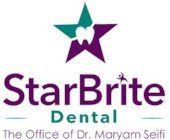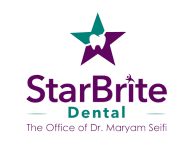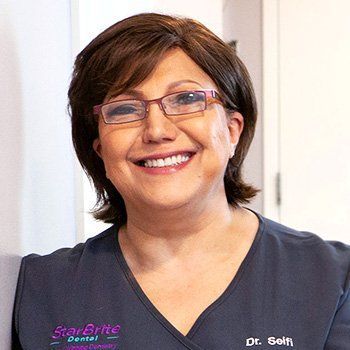The Cone Beam Computed
Tomography Scan
That’s a big series of words for a dental technology that actually works out to be pretty simple! Understanding each term in the name can enable you to understand what this imaging system is, what it does and the ways your health can benefit.
Cone beam computed tomography is usually abbreviated as CBCT.
Computed Tomography (CT Scan)
To begin understanding this system, let’s start with something you may have already heard of or even experienced: A CT Scan. If you’ve had one, it’s possible that no one ever explained to you what the words mean or what this scan is or does. We’ll break it down for you.
- Tomography: This is a method of creating a three-dimensional image of the inside of the body. Tomo comes from a Greek word meaning section. Graphy refers to writing or picturing something in a particular way, such as photography. So tomography provides detailed imaging of any section of the body.
- Computed tomography: By connecting a machine taking these three-dimensional images to a powerful computer, a massive amount of digital data can be recorded and then retrieved. Thousands of images can be recorded and then can be viewed separately or assembled into a model of a body part.
- CT Scan: With the computer working together with the imaging machine, a detailed form of radiography is accomplished. Radiology refers to the creation of images of the inside of the body using very tiny radiation exposure. An x-ray is another form of radiography. But an x-ray can only shine a radiation source all the way through a part of the body. A CT scan can isolate any slice of the body at any depth, and permit close examination of that individual image. Each of these minute slices is referred to as a cross-section. Multiple cross-sections can be assembled into a three-dimensional model of any part of the body.
So if you had a CT scan in the past, a doctor could look for abnormalities in muscles, bones, ligaments, organs or any other part of the body. For example, an intestinal blockage might not be able to be diagnosed with an x-ray. But a CT scan could enable a doctor to detect the cause of an intestinal blockage because of the greater depth and detail available in a CT scan.
Cone Beam
A cone beam CT is a specialized type of CT used for dental examinations and diagnosis. Once this imaging has been captured, your dentist can not only view detailed images of your teeth, soft tissues, nerve pathways and bone, they can also move this imaging around just as though they had a three-dimensional model of your teeth, jaws and face in their hands. For example, they can view your facial bones from the front, back, bottom, top or see any section inside your bones.
Why is it called a cone beam CT? Because the x-ray beam that takes the images is in the shape of a cone. As a CBCT image is taken, this cone-shaped x-ray beam rotates around your head with the wide end of the cone pointed at the face. The computer captures 150 to 200 high-resolution images which are then assembled by the computer into that three-dimensional model that your dentist will use for examination and diagnosis.
Benefits of Dental Cone Beam Computed Tomography
At StarBrite Dental, we insist on the highest standards of care in every treatment we do. Providing this quality of care requires precise diagnosis. In many cases, only cone beam computed tomography will give our dentists enough precision to provide this excellence of care. This is the most important benefit to you of cone beam CT.
Specific uses for cone beam CT include:
- Identifying abscesses in the roots of teeth
- Detecting cysts or tumors
- Spotting fractures in the roots of teeth
- Noting areas of tooth roots that are being resorbed (broken down)
- Mapping the exact shape and depth of roots before root canal therapy
- Verifying soundness of bone before dental implants are placed
- Diagnosing wisdom tooth problems or inflammation in the pulp of teeth
What Does a Dental Cone Beam Computed Tomography Scan Show?
All the following structures can be viewed in detail by your StarBrite Dental practitioner when a dental cone beam CT has been completed:
- Bones of the upper and lower jaw
- Insides and outsides of teeth
- Muscles
- Blood vessels
- Nerves and nerve channels
- Glands
- Sinuses
- Airway including nasal cavity, pharynx and larynx
- Tongue
- Temporomandibular joint and cartilage
The precision of your dental treatment is greatly aided by the use of cone beam CT. As our goal is the very best result possible from your treatment at StarBrite Dental, we always use the most advanced cone beam CT technology available.
Radiation Exposure
Current imaging systems result in far less radiation exposure than earlier systems. We specifically select cone beam CT systems that will expose our patients to the most minimal doses of radiation possible, while still acquiring precise imaging that enables us to provide excellent care.
The amount of radiation exposure received from the x-ray source in a cone beam CT machine is roughly the same as the amount of radiation absorbed by a human body in two weeks on earth. That’s because there is always a small amount of radiation present in every environment. This is called
background radiation.
We only use our dental cone beam CT system when it is necessary to ensure that we know exactly what treatment is needed so we have a precise understanding of how to treat any problem that is occurring.
Here are some examples of times when a cone beam CT has been essential to guide our diagnostics and treatments.
Education of our patients is very important to us! We want to answer your questions about your treatment because we believe this will enable you to be more comfortable as we provide your care. Your comfort and relaxation as we take care of your dental and oral health are a priority for us.
StarBrite Dental: For Excellence in Every Aspect of Your Care
If you are in the Rockville, Maryland, area, we are ready to show you a whole new world of superior dental technology accompanied by warmth and friendliness of care. The next time you need expert diagnostics and treatment, please call us to schedule an appointment: (301) 770-1070.
Contact Us to Schedule an Appointment Today!
*We DO NOT ACCEPT HMO Insurance, State Insurance, Medicaid/Medicare, or discount plans. Fees apply for services.
Evening and Weekend Hours Available
- Monday
- Closed
- Tuesday
- -
- Wed, Fri
- -
- Thursday
- -
- Saturday
- -
- Sunday
- Closed
Office
(301) 770-1070
Fax (301) 770-0544
5936 Hubbard Dr, Rockville, MD 20852


